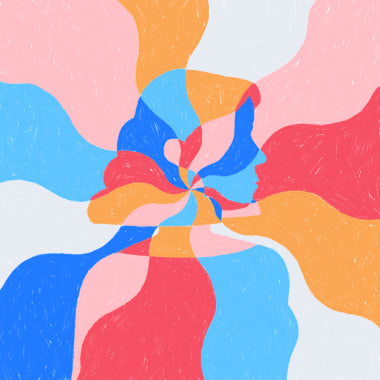
What is Art Therapy and How Can It Benefit Your Mental Health?
We explore what art therapy is and its potential benefits for your mental health.
Be surprised, inspired and learn more about the origin, meaning, curiosities and tools of the creative universe.

We explore what art therapy is and its potential benefits for your mental health.
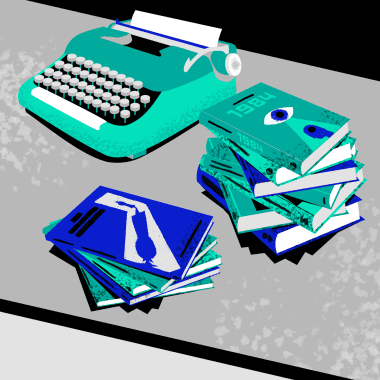
Discover the characteristics and differences that define a novel and a short story and find out which is the best fit for your writings
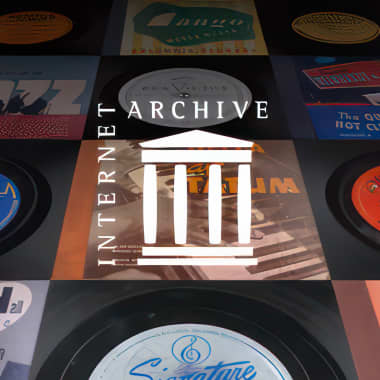
Discover in the great Internet Archive the more than 400,000 recordings made by the Great 78 Project.
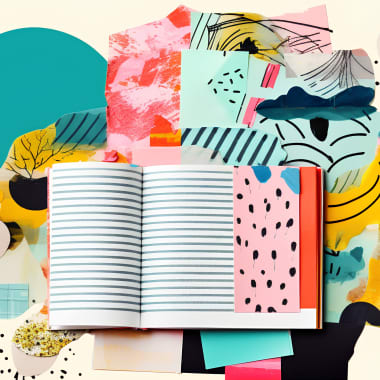
If you still don't know what alliteration is, find out with these clear examples.
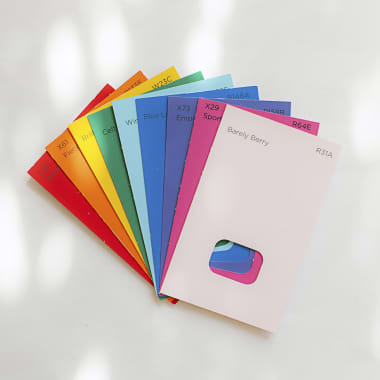
Discover how to generate effective and attractive color combinations using this color theory technique Color plays a vital role in the world we live in. It influences our thoughts, affects our reactions, and causes strong emotional associations. Color also impacts us on a physical level: our eyes can be soothed or irritated by a color; colors can increase blood pressure or suppress appetite. And when used correctly, color can even help us save energy. As a communicative tool, color is irreplaceable. The universality of its language helps us make our messages flow and invoke certain emotions more easily. For all these reasons and more, it’s essential to learn to speak the language of color theory. And within this language, a technique we should acquire is color harmony.
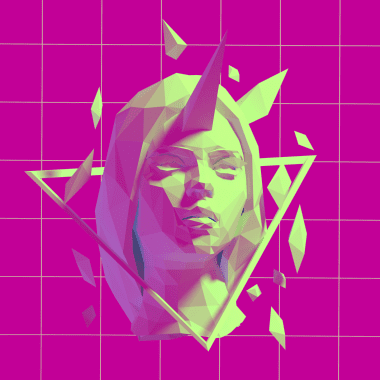
Learn about low poly: a computer graphics art used in video game design and other creative fields Low poly art is one of the most attractive contemporary styles used in video game design, animation, and illustration. You can create cool and simple-looking objects using blocky polygons. This modeling technique has been used to create low-res 3D models, thanks to the simplicity in which you can create basic objects and the fact that the rendering process is in turn reduced. What is low poly exactly? What does the term mean and what are its main features? Art director and low poly 3D modeling expert Daniel Gutiérrez (@danielgutierrez) explains more.
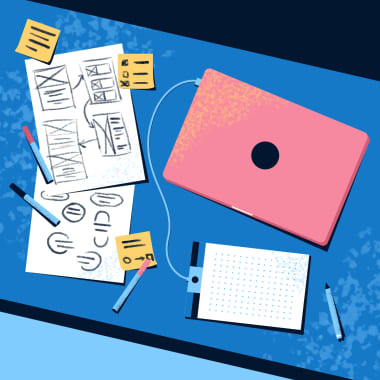
Discover how the design process works, the importance of different approaches, and how to use it to enhance your creativity
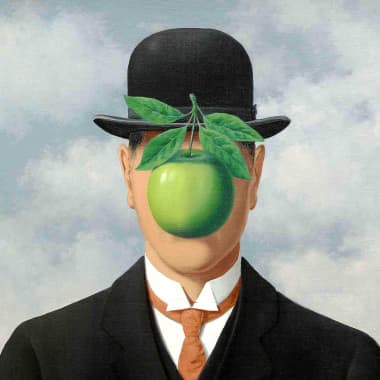
Discover what surrealism is and its characteristics and the mark it has left on painting and literature.

Discover the history of flower arranging and learn how to create beautiful designs using flowers, foliage, and more
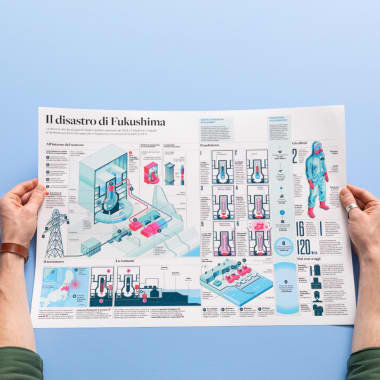
Find out what it is, what types of infographics exist and get to know some examples.

This small guide will help you discover, finally, the difference between knitting and crochet For anyone not familiar with weaving, it can be complicated differentiating between knitting (weaving with two needles) and crochet (weaving with a hook): they share many similarities but there are some key differences. Bárbara Bremer and Carolina Herrera, founders of Binge Knitting (@bingeknitting)–a company specialized in the creation of hand woven collections of contemporary designs–explain how the two crafts are alike and how they differ so you can learn to enjoy them and discover which would be best for your own creations.
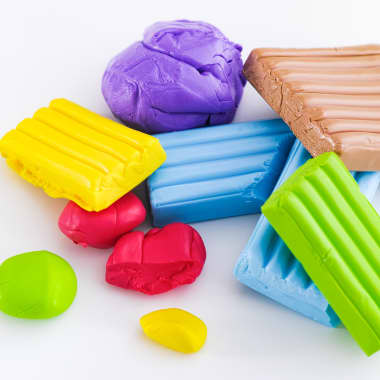
Explore the world of polymer clay cane pattern compositions with this comprehensive beginner's guide, including tips, techniques, and FAQs to help you create stunning designs. Delve into the fascinating world of polymer clay, learn about the different types, their unique characteristics, and how they can be used to create stunning art and craft projects. Discover this amazing Domestika course: Polymer Clay Cane Pattern Compositions for Beginners Introduction Polymer clay canes are a fantastic way to bring creativity and artistic flair into your life. With an almost infinite number of pattern compositions, you can unleash your imagination and create stunning designs for jewelry, home décor, or simply as a fun hobby. If you're a beginner to the world of polymer clay canes, you're in the right place! In this article, we'll delve into the ins and outs of polymer clay cane pattern compositions, provide tips and tricks to get you started, and answer some frequently asked questions. So, let's jump right in! Discovering the Joy of Polymer Clay Canes Polymer clay canes are a versatile and exciting medium for artists and crafters of all skill levels. From intricate floral patterns to bold geometric designs, the possibilities are virtually endless. So, how do you begin your journey into this colorful world? Types of Polymer Clay There are several types of polymer clay, each with its unique properties, making them suitable for various projects and applications. Some of the most popular types include: 1. Original Sculpey Original Sculpey is an easy-to-work-with polymer clay that's perfect for beginners and children. It's soft and pliable, making it easy to shape and mold. However, Original Sculpey is less durable than other types of polymer clay, making it less suitable for intricate or delicate projects. 2. Sculpey III Sculpey III is a popular choice among artists and crafters due to its vibrant color range and ease of use. It's slightly firmer than Original Sculpey, making it suitable for more detailed work. However, it can be brittle after baking, so it may not be the best option for projects that require a high degree of strength and flexibility. 3. Premo! Sculpey Premo! Sculpey is a high-quality polymer clay designed for professional artists and experienced crafters. It offers a wide range of colors, excellent durability, and a high level of flexibility after baking. Premo! Sculpey is perfect for creating intricate designs, detailed sculptures, and jewelry pieces that require strength and flexibility. 4. Fimo Fimo is a popular European brand of polymer clay that's known for its high-quality finish and extensive color range. Fimo is available in different lines, such as Fimo Soft, Fimo Professional, and Fimo Effect. Each line offers unique characteristics, catering to various skill levels and project requirements. Fimo clay is generally firmer than Sculpey, making it suitable for detailed work and projects that require durability. 5. Kato Polyclay Kato Polyclay is a professional-grade polymer clay that's known for its strength, flexibility, and high-quality finish. It's a firmer clay that's ideal for detailed work, intricate canes, and projects requiring durability and resilience. Kato Polyclay's color range is more limited than other brands, but it's highly pigmented and can be easily mixed to create custom colors. 6. Cernit Cernit is a Belgian brand of polymer clay that offers a smooth and porcelain-like finish. It's available in various lines, such as Cernit Number One, Cernit Doll, and Cernit Opaline, each with unique characteristics and color ranges. Cernit is known for its durability and flexibility, making it a popular choice for jewelry, sculptures, and other projects that require a high level of detail and strength.

Welcome to the whimsical world of concept art, where artists create the blueprints for fantastical realms, heroic characters, and the occasional villainous cucumber! You see, concept art is like the secret sauce behind your favorite movies, video games, and animations. It's the magical ingredient that turns a spark of imagination into a visual feast for the eyes. Imagine you're the master chef in a kitchen of creativity. You've got a brilliant recipe for a captivating story, but how do you make it come to life? Enter concept art! Our talented artists whip up a delightful array of sketches, paintings, and digital renderings to give form and flavor to those tasty ideas. From valiant space hamsters to enchanted teapots, there's no limit to what a concept artist can cook up. So, if you've ever daydreamed about designing dragon-sized donuts or sketching the latest in alien fashion, concept art might just be the perfect playground for your wild imagination. And who knows? You could be the artistic genius behind the next blockbuster hit or epic video game adventure. Get ready to unleash your inner artist and take a bite out of the scrumptious world of concept art! So, in a nutshell, what is concept art? Concept art is a form of visual representation used to convey and communicate ideas, designs, and themes before they are brought to life in various forms of media, such as video games, movies, television shows, animations, and even theme park attractions. Concept artists create illustrations, sketches, and paintings that help directors, producers, game designers, and other creative professionals to visualize the intended look and feel of characters, environments, objects, and scenes. Concept art serves as a foundation for other artists, such as 3D modelers, animators, and visual effects artists, who use the concept art as a reference to build and create the final assets for the project. Concept artists often work closely with art directors and creative leads, taking feedback and iterating on their designs to ensure the final product aligns with the overall vision of the project. ------------------------------------------------------------------ Discover this amazing Domestika course: Concept Art: Character Design & Worldbuilding ------------------------------------------------------------------
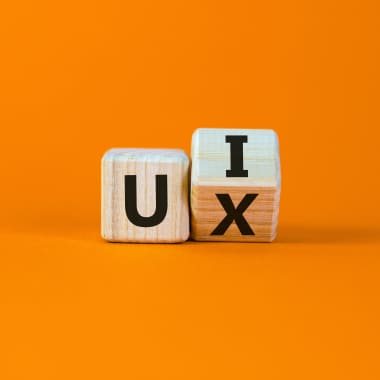
Navigating an app shouldn't feel like solving a Rubik's Cube on a unicycle. Welcome to User Experience (UX) Fundamentals, where digital Sherlocks create cozy virtual spaces and users laugh off complexity! UX Fundamentals, or User Experience Fundamentals, refers to the foundational concepts, principles, and methodologies that underlie the design and development of digital products and services with the primary objective of providing users with a seamless, intuitive, and enjoyable experience. By understanding and applying these fundamentals, designers and developers can create user-centric solutions that effectively address users' needs, preferences, and expectations, ultimately leading to increased user satisfaction, engagement, and loyalty. At its core, UX Fundamentals encompasses a multidisciplinary approach that combines cognitive psychology, human-computer interaction, usability engineering, and visual design to create a holistic understanding of how users interact with and perceive digital products. This understanding is then leveraged to inform the design process, ensuring that the resulting product is not only aesthetically pleasing but also functional, accessible, and easy to use. ------------------------------------------------------------------ Discover this amazing Domestika course: Introduction to UX Design ------------------------------------------------------------------
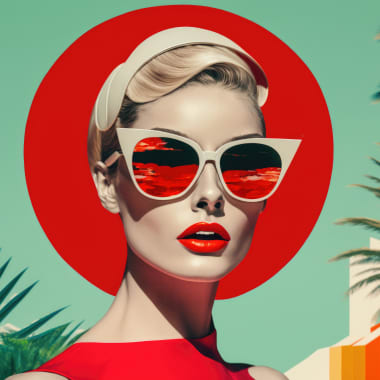
What is digital illustration? Digital illustration involves the creation of visual compositions or artwork utilizing digital tools and technology. This artistic field merges conventional artistic methods with digital software and hardware capabilities, generating visually stunning images for diverse purposes. Digital illustration has experienced significant growth over time and is now an integral component of numerous industries such as entertainment, advertising, education, publishing, and design. Specialized software programs like Adobe Illustrator, Adobe Photoshop, CorelDRAW, and Procreate are used for digital illustration. These platforms equip artists with a wide variety of tools, brushes, and features, enabling them to craft intricate, high-quality visuals. Furthermore, artists can employ hardware devices like drawing tablets and styluses, which simulate the feel of traditional pen and paper. A key advantage of digital illustration is the layer functionality. Layers permit artists to manage and modify separate components of an illustration independently, providing greater control over the final piece. This feature allows illustrators to test various effects, colors, and styles without impacting other parts of the artwork. In addition, digital illustrations are easily adjustable, allowing artists to make modifications and improvements without starting from scratch. Digital illustration is also highly versatile, with artists able to produce a broad spectrum of visual styles, ranging from photorealistic portrayals to abstract or stylized depictions. This adaptability enables digital illustrators to tailor their work to various contexts and objectives. Additionally, digital files can be effortlessly shared, resized, and replicated, making digital illustration a fitting choice for collaborative endeavors and commercial use. Beyond these benefits, digital illustration presents infinite possibilities for artistic exploration. Artists can experiment with diverse techniques and media, fusing traditional art elements with digital software's distinct capabilities. For instance, illustrators can integrate hand-drawn elements with digital painting, vector graphics, or even 3D modeling to produce unique, hybrid compositions. While digital illustration boasts numerous advantages, it has also been criticized for distancing artists from the physical experience of traditional art forms. Some argue that digital tools can result in a loss of spontaneity and authenticity in the artwork. However, others maintain that the medium's adaptability and flexibility open up new avenues for creative expression and innovation. In summary, digital illustration represents an ever-evolving artistic field that blends traditional and contemporary art techniques. By harnessing digital tools and technology, artists can produce captivating visual representations for various industries and purposes. As this domain continues to expand and adapt, digital illustration will undoubtedly maintain its prominence and allure as a medium for artistic expression. ------------------------------------------------------------------ Discover this amazing Domestika course: Procreate for Beginners: Digital Illustration 101 ------------------------------------------------------------------

Sketching is a fundamental artistic technique that involves the creation of quick, informal, and simplified drawings to capture the essence, form, and structure of a subject or idea. It serves as a visual language for artists to explore, communicate, and refine their thoughts and concepts. Sketching can be executed using various media, including but not limited to pencils, pens, charcoal, pastels, and digital tools. The process of sketching often prioritizes the expression of ideas and emotions over the pursuit of realism and detail. By focusing on the essential elements of a subject, such as its shape, proportion, and movement, artists can better understand and convey the underlying structure and rhythm of their subject matter. As a result, sketching serves as an invaluable tool for developing observational skills, fostering creativity, and enhancing visual communication abilities. Sketches can take on a wide variety of forms, from simple line drawings and rough thumbnail sketches to more elaborate and refined renderings. They can be used for multiple purposes, such as brainstorming, planning a more complex artwork, practicing technique, or simply enjoying the act of drawing for personal expression and relaxation.

We have prepared the ultimate "Gouache Paint FAQ for Artists" with everything you want to know about Gouache. What is gouache paint? Gouache is a type of water-based paint that is used for artistic applications such as illustration, commercial art, and design work. It is made from pigments mixed with a binding agent and a water-soluble binder, typically gum arabic, which gives it a creamy consistency. Unlike transparent watercolors, gouache is opaque, allowing for greater coverage and more vibrant color. It dries to a matte finish and is known for its versatility, mixability, and quick drying time. How is gouache paint different from watercolor? Gouache and watercolor are both water-based paints, but there are some key differences between the two: Opacity: The most notable difference between gouache and watercolor is their opacity. Gouache is an opaque paint, meaning that it covers the surface completely and can be painted over previously applied layers. Watercolor, on the other hand, is a transparent paint, allowing the surface underneath to show through. Consistency: Gouache has a thicker consistency than watercolor, which makes it easier to control the application of the paint and to create solid blocks of color. Watercolor is more fluid, making it better suited for creating delicate washes and subtle blends of color. Vibrant color: Gouache is known for its rich, vibrant color, as the paint is highly pigmented. Watercolor, on the other hand, is more subdued in color, creating a softer, more delicate look. Drying time: Gouache dries relatively quickly, while watercolor takes longer to dry. This can affect the way that artists work with the paints, as it may impact the ability to make changes or corrections to the painting. Finish: Gouache dries to a matte finish, while watercolor dries to a glossier finish. This can affect the final look of the painting, as well as the way that light interacts with the surface. These differences make gouache and watercolor two distinct types of paint, each with its own strengths and weaknesses. Both can be used to create beautiful works of art, but the choice between the two often comes down to personal preference and the desired effect.

A cinematic documentary is a genre of filmmaking that combines elements of traditional documentary storytelling with cinematic techniques often found in fictional narrative films. These techniques may include stylized cinematography, compelling sound design, dramatic music, creative editing, and visual effects. The purpose of a cinematic documentary is to present factual information and real-life stories in a more visually engaging and emotionally evocative manner, thereby enhancing the viewer's experience and connection to the subject matter.
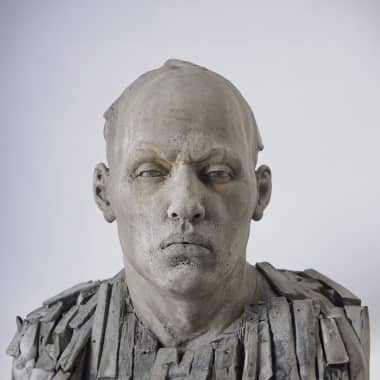
Clay modeling techniques are diverse and provide artists with a range of possibilities for creating unique and expressive pieces. Here is a list of some common clay modeling techniques and a brief explanation of each:

Learn what atmospheric illustration is along with the key things you need to consider when creating immersive artwork of your own Atmospheric illustrations are artworks that focus on creating a specific mood or ambiance through the use of visual elements such as color, lighting, texture, and composition. These illustrations evoke emotions and, as the name suggests, convey a sense of atmosphere, often immersing the viewer in the depicted scene or environment. Artists use various techniques to achieve this effect, from playing with contrasts between light and shadow to utilizing color palettes that evoke specific feelings. Atmospheric illustrations can be found in various forms of media, including book covers, concept art for movies and video games, editorial illustrations, and fine art, always with the same intention—to evoke a connection between the viewer and the piece of work. ------------------------------------------------------------------ Discover this amazing Domestika course: Atmospheric Painting in Procreate: From Concept to Color ------------------------------------------------------------------
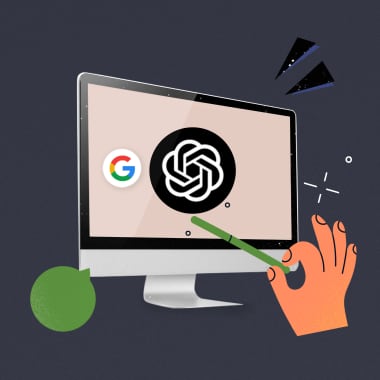
If you are a content or copywriter, this post about a free revolutionary AI tool will interest you 2022 has consecrated Artificial Intelligence and its nearly infinite possibilities for many human and creative tasks and activities. Until now, this technology seemed to be beyond the reach. However, the arrival of ChatGPT, a free artificial intelligence chat system capable of responding to anything you ask of it, could break that barrier. What do you know about this impressive, free AI tool that seems to answer almost anything you can think of? A simplified summary of what you can do with it is that it looks like it's here to replace Google, although it's much more than a search engine. It is a chat that has been specially designed so that you can ask it questions, and it can explain anything to you. All you need to do to is to register. ChatGPT can generate texts, summaries, code for a web page, and a script for a YouTube or TikTok text, and do it in a serious or casual tone, depending on your requests. Read on to find out what ChatGPT is, how to use it, and an example of what you can do with a tool that is set to revolutionize the Internet and the world of AI.

Discover the core principles of spatial design, and how you can use them to imagine creative spaces with people in mind
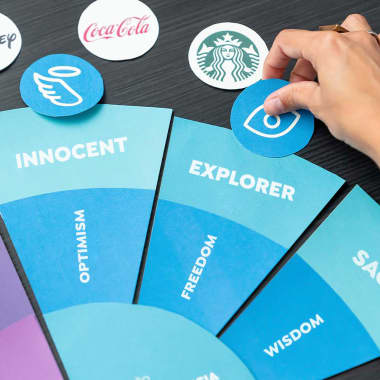
Learn why archetype branding is important, and how to use it to define a unique, memorable personality for your product or service
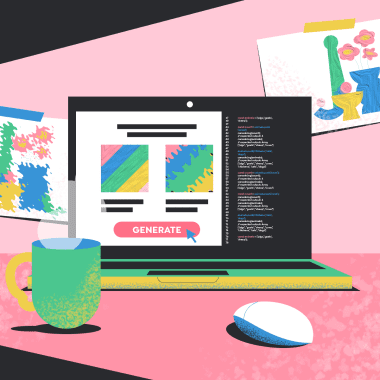
Discover the history of artificial intelligence and art, learn how contemporary artists collaborate with AI, and get tools and tips to inspire your work
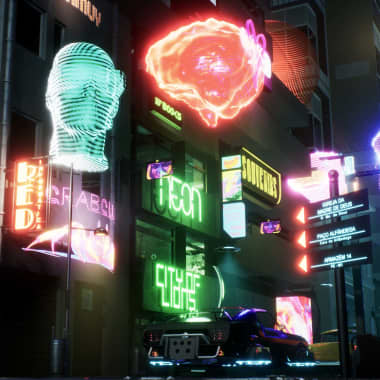
Learn how to build immersive video game art, and discover top tips to consider as you design, model, and render fantasy environments
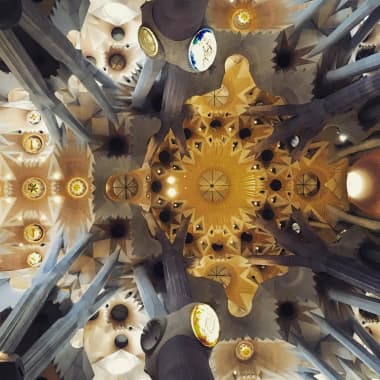
Biomorphic art spans across mediums, from drawing to architecture: discover what this style is, and how natural forms can create unique shapes and patterns
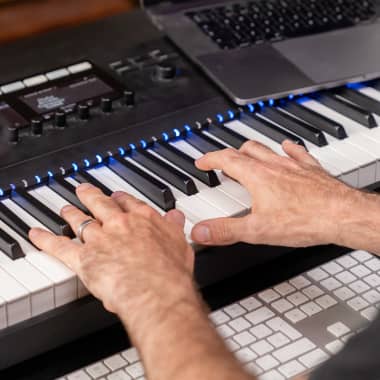
Learn how composers craft pitch-perfect audiovisual stories with music, then explore famous examples from the world of film and documentary
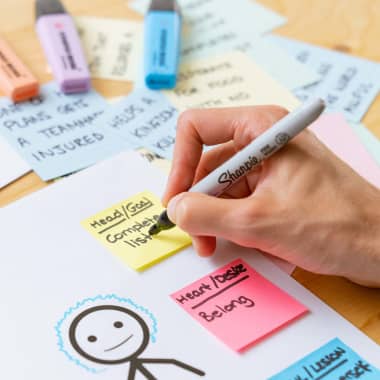
Build realistic and relatable characters that your reader will never forget, with this introduction and tips from a professional screenwriter and author
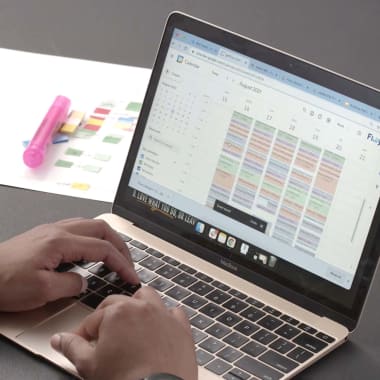
Achieve your goals in a realistic and personalized way with these mindset-shifting time management techniques and exercises

Develop your story's setting by learning how worldbuilding works, exploring iconic literary worlds, and reading top advice from two sci-fi and speculative fiction authors